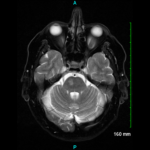Trial limitations included a higher-than-expected percentage of patients who discontinued both 15 mg upadacitinib and placebo, 26% and 37%, respectively. Researchers point to timing of the trial during the COVID-19 pandemic. Also, the researchers did not evaluate the efficacy of upadacitinib in patients for whom IL-6 inhibitors had also been ineffective.
The study had two phases, but the paper discusses only data from the first. Dr. Blockmans expects analysis of an extension phase involving 20 patients that will show whether these patients retained their remission and provide further safety data. The paper calls for more, longer-term safety assessments of upadacitinib.
On the Horizon
These first phase results, as well as the EC and FDA approvals are exciting because some rheumatologists and patients now have more treatment options. “No one drug helps all patients,” Dr. Blockmans says.
Investigators are searching for other options. According to Dr. Blockmans, a phase 3 trial is testing secukinumab, a monoclonal antibody or lab-made protein that blocks the cytokine IL-17, a signaling protein, to reduce inflammation.
Other drugs have not advanced to phase 3 trials, Dr. Blockmans notes. He was part of a team that got promising results for mavrilimumab, a monoclonal antibody that targets and inhibits granulocyte-macrophage colony-stimulating factor receptor (GM-CSFR) in a phase 2, double-blind, placebo-controlled trial, but the trial sponsor declined to pursue further investigation.3 A study of guselkumab, a monoclonal antibody that selectively targets the p19 subunit of IL-23, was terminated early, he adds.
But upadacitinib is a good new option. “If steroids don’t work, if tocilizumab doesn’t work or if there is a contraindication for it, you have upadacitinib,” Dr. Blockmans says.
He notes that contraindications for tocilizumab include diverticulitis, which is common in elderly patients.
Deborah Levenson is a writer and editor based in College Park, Md.
References
- Blockmans D, Penn SK, Setty AR et al. A phase 3 trial of upadacitinib for giant-cell arteritis. N Engl J Med. 2025 May 29;392(20):2013–2024.
- Goldman A, Galper BL, Druyan A, et al. Adverse cardiovascular events in rheumatoid arthritis patients treated with JAK inhibitors: An analysis of post-marketing spontaneous safety reports. Semin Arthritis Rheum. 2024 Aug;67:152461.
- Cid MC, Unizony SH, Blockmans D, et al. Efficacy and safety of mavrilimumab in giant cell arteritis: A phase 2, randomised, double-blind, placebo-controlled trial. Ann Rheum Dis. 2022 May;81(5):653–661.

